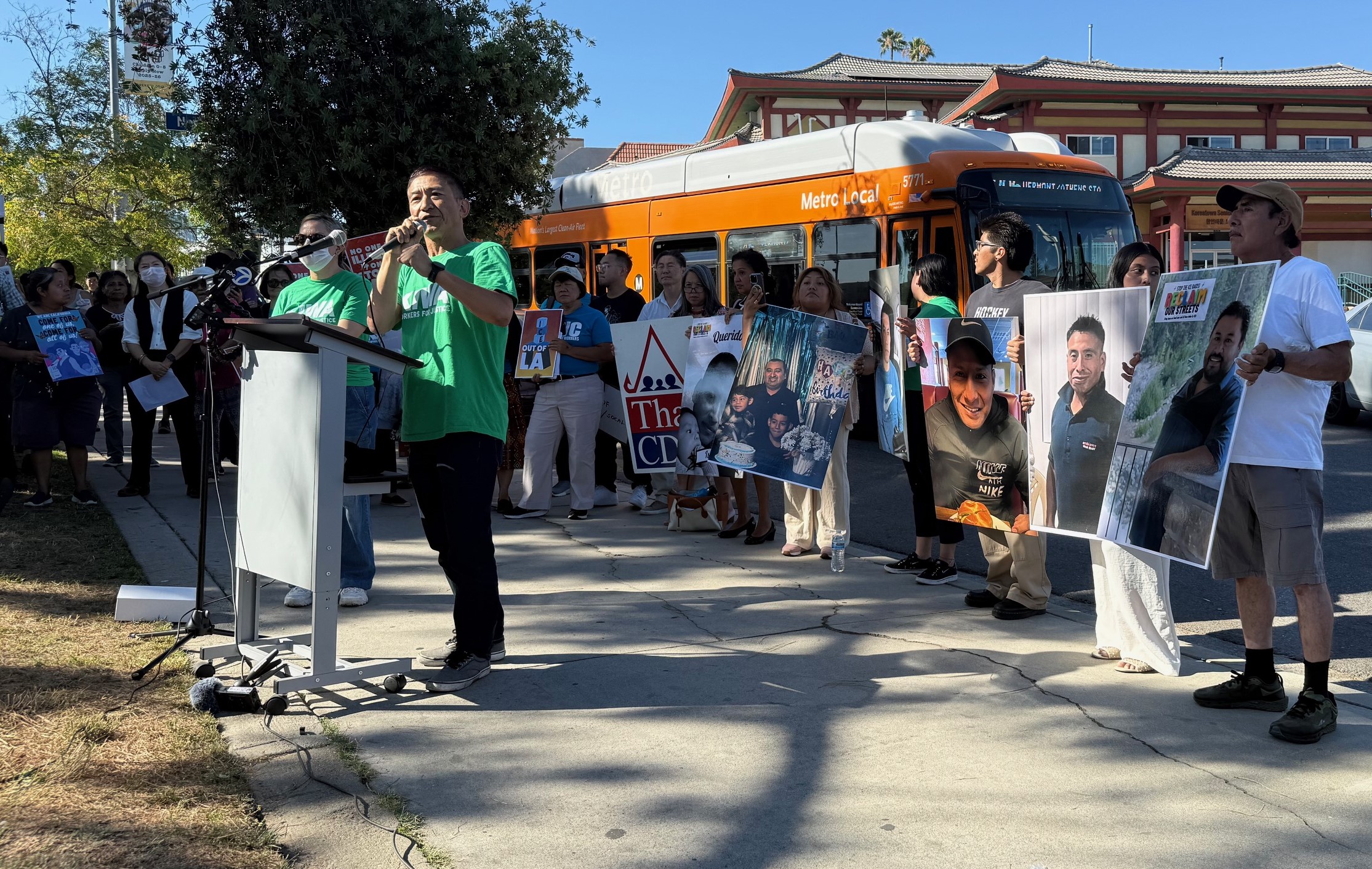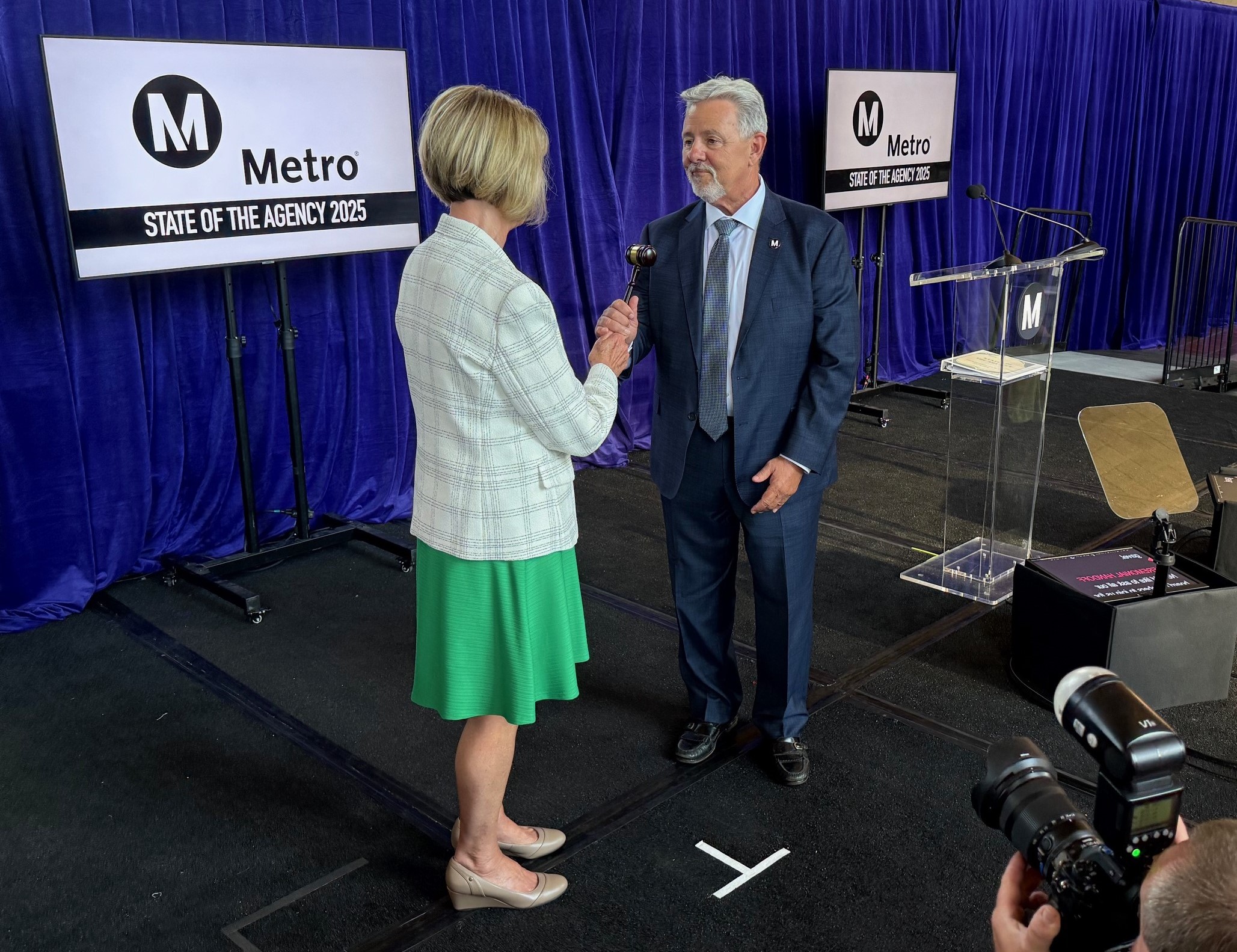 One of the less high-tech methods of getting info on a hit and run. Photo: Patrick Miller
One of the less high-tech methods of getting info on a hit and run. Photo: Patrick Miller On May 19, a cyclist, let's call him Roadblock, was riding home late at night on Glendale Boulevard. Roadblock's bike was lit up with front and rear lights and he was wearing a helmet. Just a couple of weeks earlier, Roadblock had been part of the "die-in" protesting the street and law enforcement conditions that helped lead to the violent death of cyclists Jesus Castillo. A couple of blocks from the Ghost Bike memorializing Castillo's passing, a Silver 2009 Jaguar registered to Glenn Gritzner slammed into Roadblock from behind sending the cyclist thirty feet in the air, before crashing to the ground. The Jaguar sped off while Roadblock lay dazed and bloody in the street.
Fortunately, Roadblock had enough of his wits to memorize most of the license plate as the car sped off. He was actually able to "tweet" the plate as the car disappeared on the horizon. After he got out of the hospital the next day, miraculously with no broken bones but plenty of bruises, scarring and pain, the LAPD seemed disinterested in his case. The officer who answered Roadblock's call gave him a two week timeline on when they would be able to run the plates, citing technology limitations in getting the ball rolling. At that point, a detective had not been assigned to the case. Apparently the delay was because the dazed and bruised cyclist was only able to get "6 of the 7" of the numbers, which caused the extra delay.
Roadblock then set out to track down the driver and using online resources such as google and his personal network through facebook and other message boards Roadblock was able to track down the driver and present his case, evidence included, to the LAPD three days later. Even though the cyclist was thrown thirty feet, the LAPD handed the case to the City Attorney as a misdemeanor, even though the original report listed the crash as a "felony hit and run." The officer explained that because there were no broken bones, the case wasn't considered a felony and the District Attorney would just pass the case on to the City Attorney anyway. For those that don't know, the D.A.'s office deals with more serious, felony, cases and the City Attorney deals with misdemeanor cases.
On January 28, Gritzner was in court with for a pre-trial hearing, his second hearing although this was his first appearance. The rest of the pre-trial proceedings will occur on February 25. If a plea bargain is not accepted by both sides, a trial date will most likely be set then.
What can we learn from this case?
First, it's likely that Gritzner would never have been charged with anything without Roadblock's vigilance both on the day of the crash and in the days that followed. The LAPD is often accused by cyclists of not taking hit and run crashes seriously, and in this case they did almost nothing leaving Roadblock to make the case himself.
Second, the LAPD made the decision themselves about the severity of the charges and decided on the lesser charge of mis-demeanor. This tells us that the LAPD has a bias towards assuming that the severity of hit and run charges but doesn't give us the ability to see how serious the District Attorney's Office treats those charges. One message that cyclists should deliver the LAPD is to refer all hit and runs to the D.A. and let them decide if the charges are serious enough to warrant a "felony" charge or a "misdemeanor" charge.
Last, it was a good thing Roadblock was wearing his helmet.
As we reported yesterday, a group of cyclists is heading to tonight's Bicycle Advisory Committee Hearing to discuss hit and run issues with the LAPD's representative to the committee. The meeting begins at 7:00 P.M. in the Hollywood Neighborhood City Hall Community Room, 6501 Fountain Avenue.






